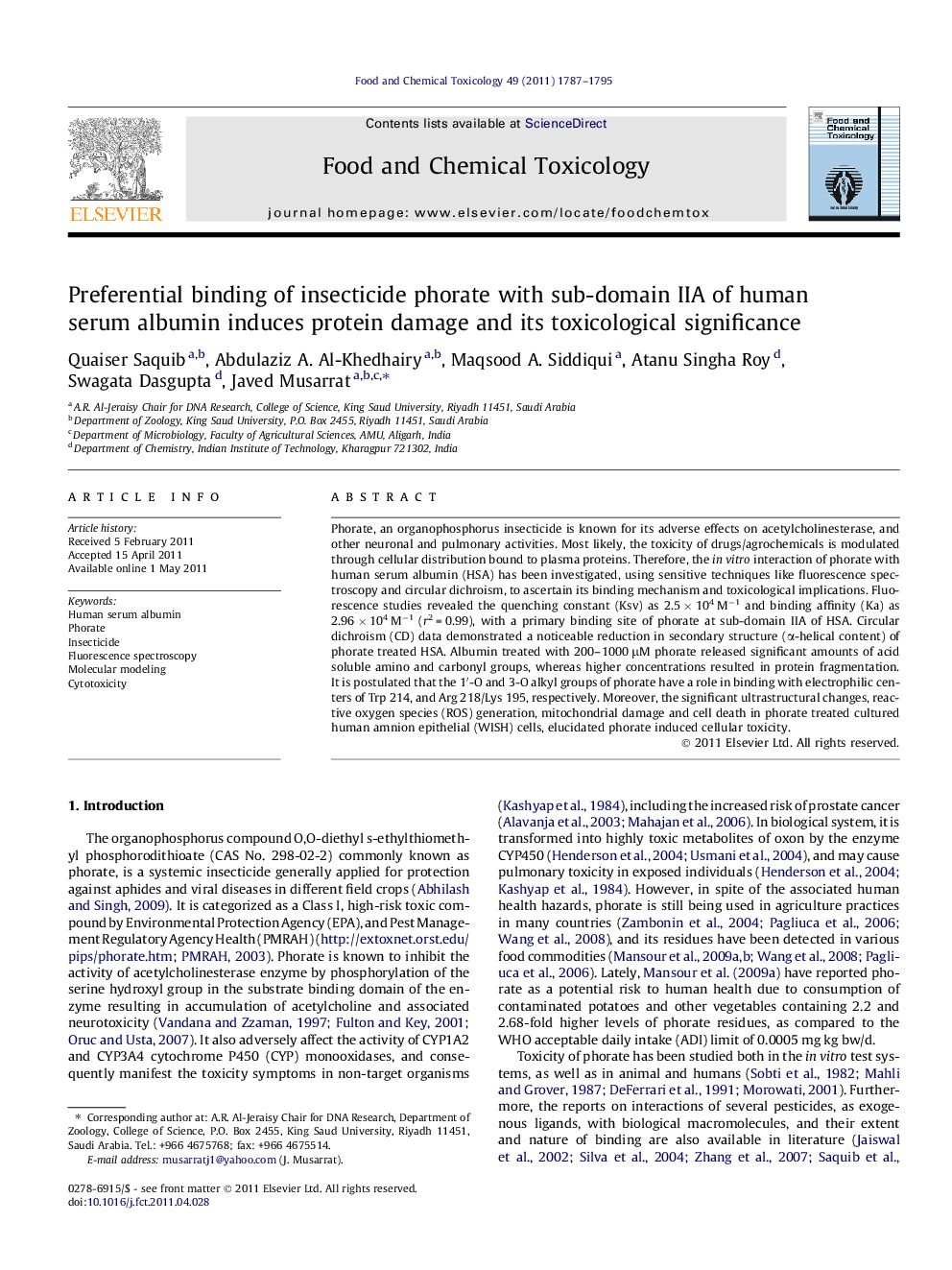| Article ID | Journal | Published Year | Pages | File Type |
|---|---|---|---|---|
| 5854126 | Food and Chemical Toxicology | 2011 | 9 Pages |
Phorate, an organophosphorus insecticide is known for its adverse effects on acetylcholinesterase, and other neuronal and pulmonary activities. Most likely, the toxicity of drugs/agrochemicals is modulated through cellular distribution bound to plasma proteins. Therefore, the in vitro interaction of phorate with human serum albumin (HSA) has been investigated, using sensitive techniques like fluorescence spectroscopy and circular dichroism, to ascertain its binding mechanism and toxicological implications. Fluorescence studies revealed the quenching constant (Ksv) as 2.5 Ã 104 Mâ1 and binding affinity (Ka) as 2.96 Ã 104 Mâ1 (r2 = 0.99), with a primary binding site of phorate at sub-domain IIA of HSA. Circular dichroism (CD) data demonstrated a noticeable reduction in secondary structure (α-helical content) of phorate treated HSA. Albumin treated with 200-1000 μM phorate released significant amounts of acid soluble amino and carbonyl groups, whereas higher concentrations resulted in protein fragmentation. It is postulated that the 1â²-O and 3-O alkyl groups of phorate have a role in binding with electrophilic centers of Trp 214, and Arg 218/Lys 195, respectively. Moreover, the significant ultrastructural changes, reactive oxygen species (ROS) generation, mitochondrial damage and cell death in phorate treated cultured human amnion epithelial (WISH) cells, elucidated phorate induced cellular toxicity.
⺠This is the first report on interaction of insecticide phorate with HSA. ⺠Phorate preferentially binds to tryptophan (Trp 214) at sub-domain IIA on HSA. ⺠CD data validated phorate-induced alterations in HSA α-helical structure. ⺠Phorate at higher concentrations induced protein damage. ⺠Cellular changes and ROS generation signifies the phorate toxicity to humans.
